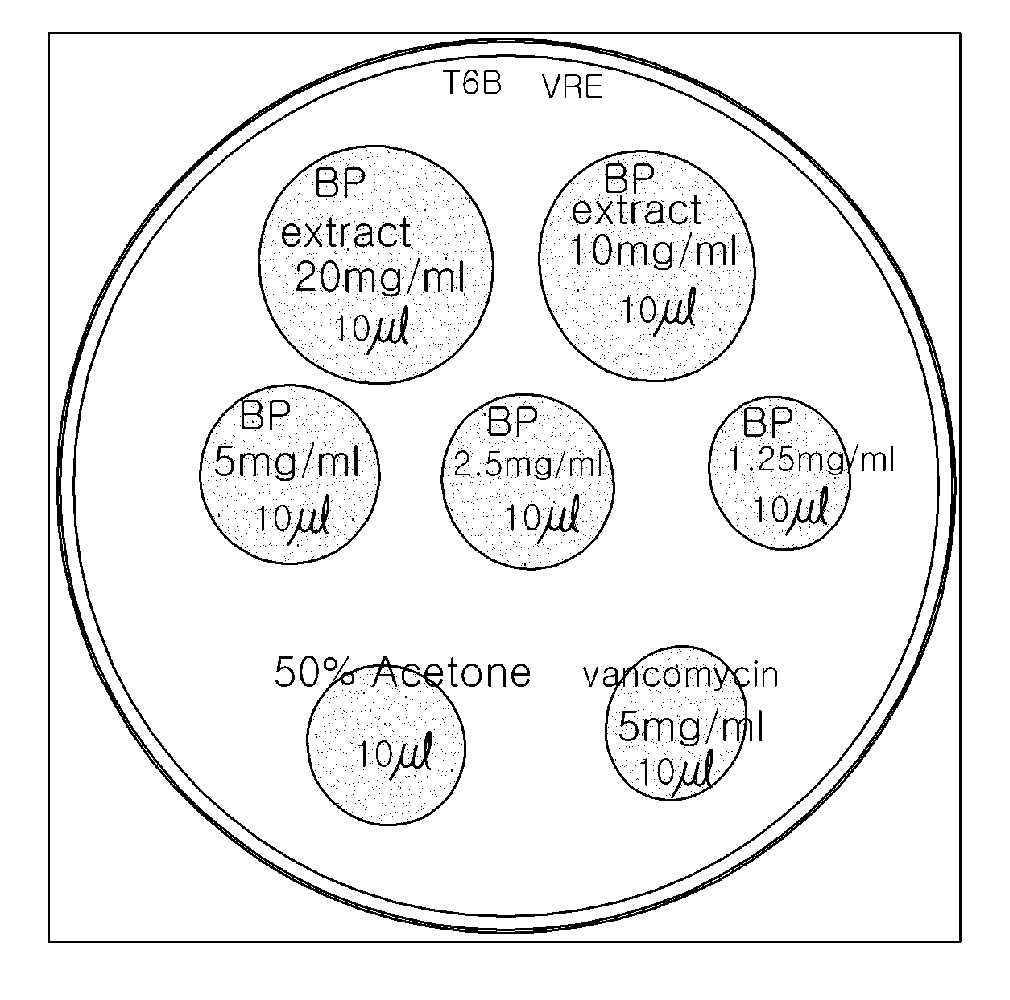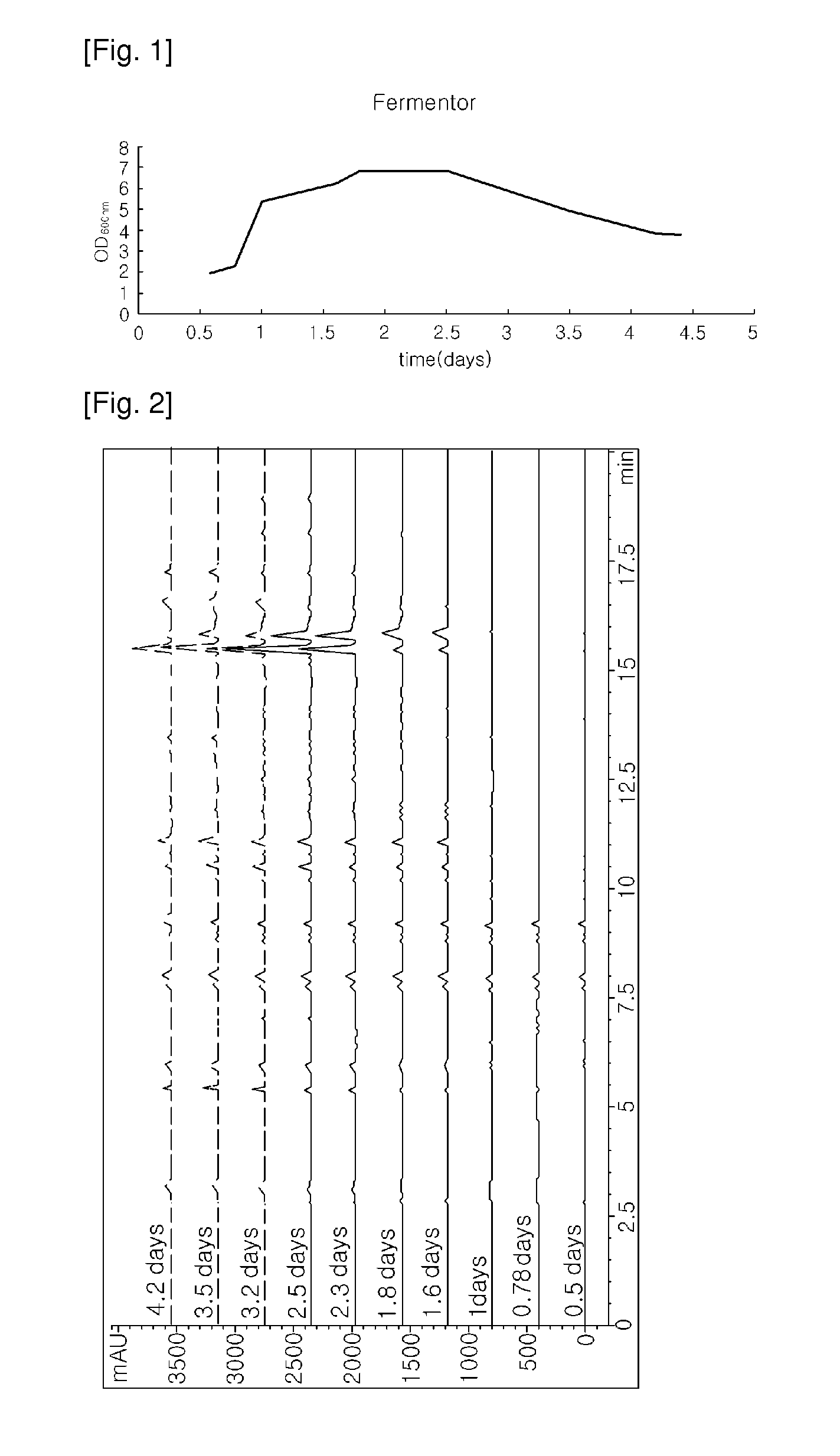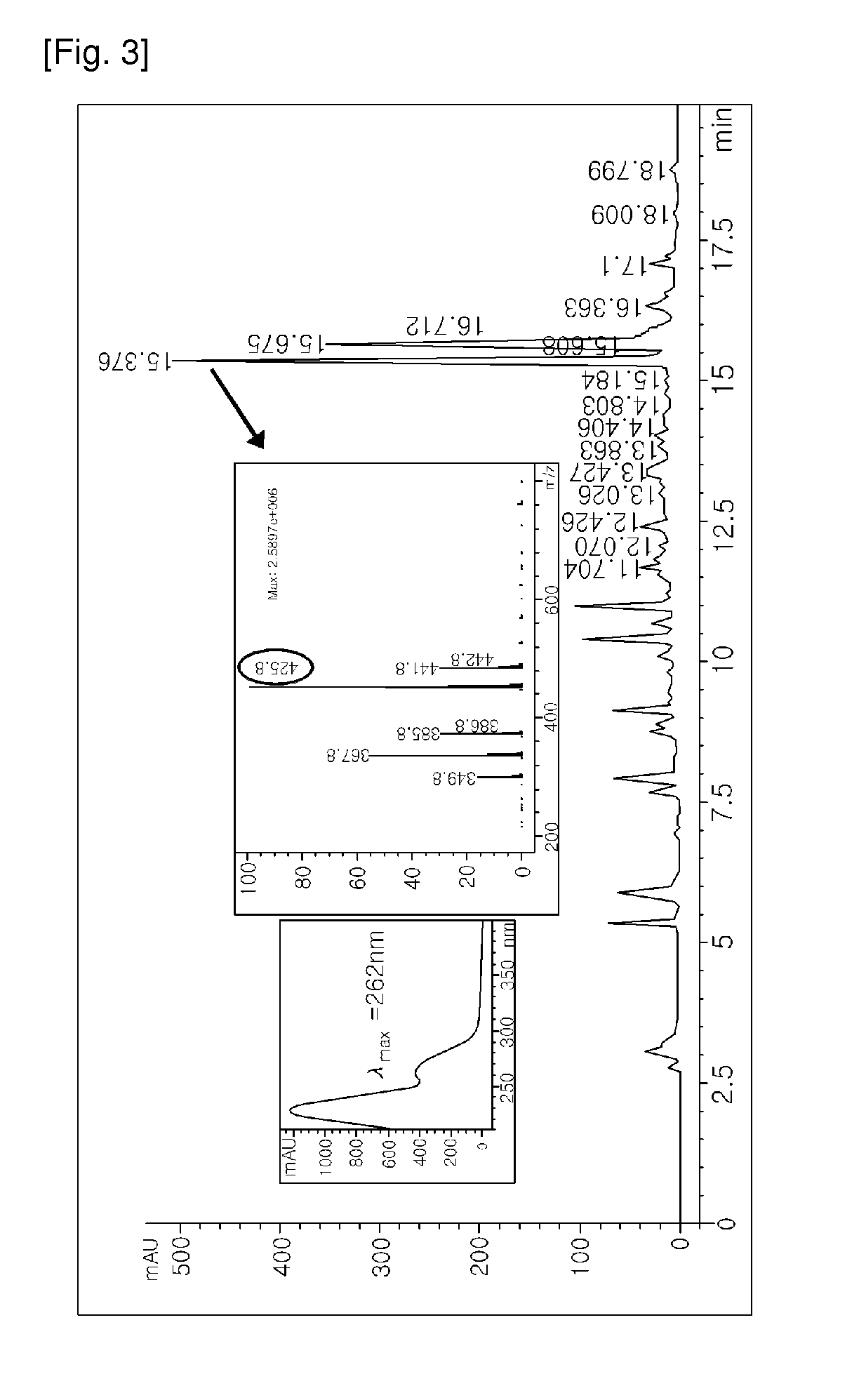Antibacterial macrolactin a that bacillus polyfermenticus kjs-2 produced in
a technology of macrolactin and bacillus polyfermenticus, which is applied in the field of macrolactin a, can solve the problems of affecting the development of new antibiotics, increasing the possibility of vancomycin-resistant mrsa, and hindering their industrial application, and achieves the effect of broad antibiotic activity and more activity
- Summary
- Abstract
- Description
- Claims
- Application Information
AI Technical Summary
Benefits of technology
Problems solved by technology
Method used
Image
Examples
example 1
Isolation and Identification of Bacillus polyfermenticus KJS-2 and Production of Antibiotic Substance
[0048][Step 1: Isolation and Identification of Bacillus polyfermenticus KJS-2]
[0049]A strain that has different morphology from that of the other strains of bacillus came to be isolated in the course of experiments for antibiotic activity against the Bacillus polyfermenticus n. sp, which had been isolated by Dr. Terakado's group in Japan in 1933. Microscopic observation revealed that the strain has the characteristics of bacillus and forms a spore, and the analysis of genealogical diagram based on the homology in the DNA sequence of 16s rRNA proved that it is a new strain belonging to the genus Bacillus. The present inventors proved that the base sequence of the 16s rRNA of the present strain had a 99% homology with that of the strain of Bacillus sp. PP19-H3, which produced previously known Macrolactin A (Korean Patent Application No. 10-2006096935:2006.10.02)
TABLE 1Antibiotic activi...
example 2
Purification of Antibiotic Substance from the Culture Medium of Bacillus polyfermenticus KJS-2
[0056]In order to purify the antibiotic substance produced by strain Bacillus polyfermenticus KJS-2, the seed culture of the strain was diluted into 3 L of TSB medium (TSB agar: Tryptone 17 g, Soytone 3 g, Dextrose 2.5 g, NaCl 5 g, Dipotassium Phosphate 2.5 g, pH 6.8 to 72 to a final concentration of 4% and was cultured for 2.5 days (30° C., 200 rpm, 1 vvm, pH6.8). The culture medium was extracted with acetyl acetate and analyzed by HPLC under the conditions using a solvent of Step 2 of Example 1, and each peak was fractionated as in FIG. 4. Each fraction was tested for antibiotic activity against Escherichia coli, Bacillus subtilis 168 and Vancomycin-resistant Enterococci. The result indicated that fractions 1, 4, 5, and 7 had antibiotic activity against Escherichia coli (refer to FIG. 4), and the fractions 1, 2, 4, 5, 6, 7, and 9 against Bacillus subtilis 168 (Refer to FIG. 4). While frac...
example 3
Structural Analysis of the Fraction which Showed Excellent Antibiotic Activity Against VRE
[0057]To analyze the structure of the finally purified substance that inhibit the growth of Escherichia coli, Bacillus subtilis 168 and Vancomycin-resistant Enterococci, fractions were prepared in large scale amount under the same conditions for preparative LC of Step 2 of Example 1 (refer to FIG. 6). The fractions were analyzed under the same conditions for LC / Mass of Step 2 of Example 1, and fraction 1 of the Example 2 was subjected to purification having a purity of 97.72% (refer to FIG. 7). 30 mg of the substance purified by preparative LC was dissolved in 700 μl of the solvent DMSO-d6 and subjected to testing of the first and the second NMR (1H-NMR, 13C-NMR, 90-DEPT, 135-DEPT, H-H COZY, HMQC, HMBC). The results of NMR analysis are shown in Table 2, FIG. 8, FIG. 9, FIG. 10, FIG. 11, FIG. 12, FIG. 13 and FIG. 14 below. The finally purified substance was identified to be Macrolactin A based o...
PUM
| Property | Measurement | Unit |
|---|---|---|
| Minimal inhibitory Concentration | aaaaa | aaaaa |
| Minimal inhibitory Concentration | aaaaa | aaaaa |
| Minimal Inhibitory Concentration | aaaaa | aaaaa |
Abstract
Description
Claims
Application Information
 Login to View More
Login to View More - R&D
- Intellectual Property
- Life Sciences
- Materials
- Tech Scout
- Unparalleled Data Quality
- Higher Quality Content
- 60% Fewer Hallucinations
Browse by: Latest US Patents, China's latest patents, Technical Efficacy Thesaurus, Application Domain, Technology Topic, Popular Technical Reports.
© 2025 PatSnap. All rights reserved.Legal|Privacy policy|Modern Slavery Act Transparency Statement|Sitemap|About US| Contact US: help@patsnap.com



